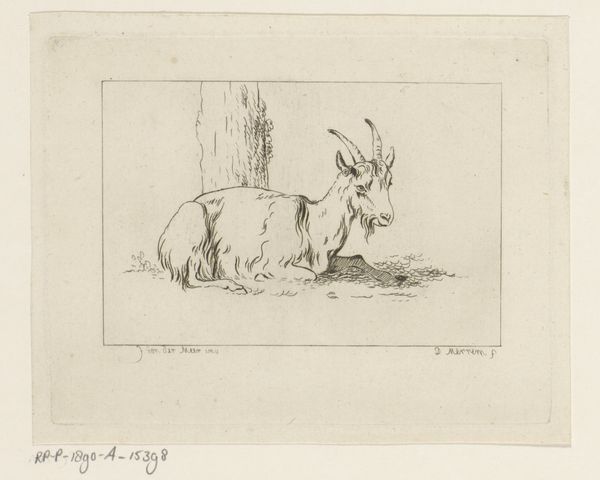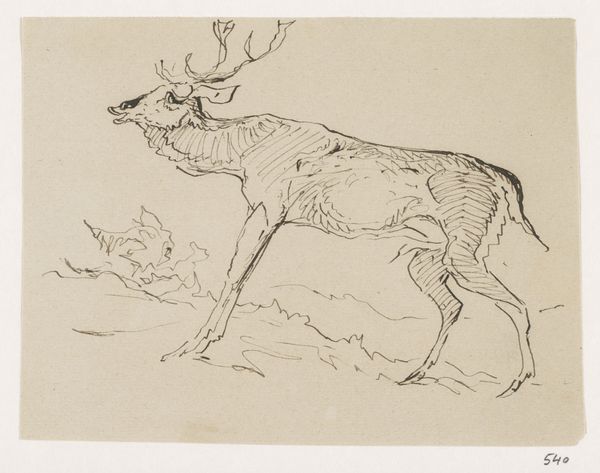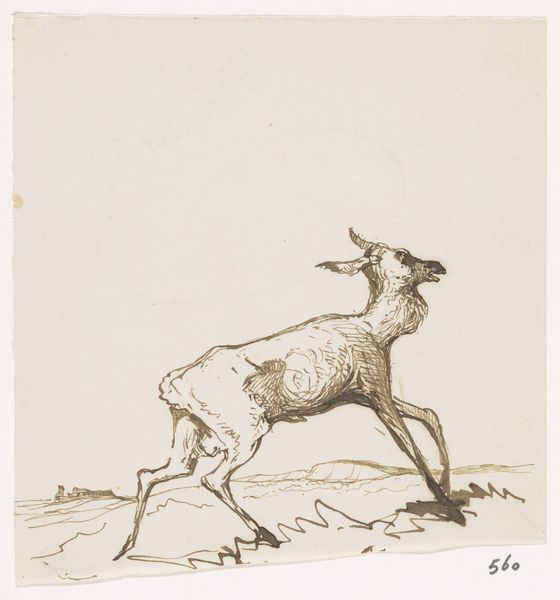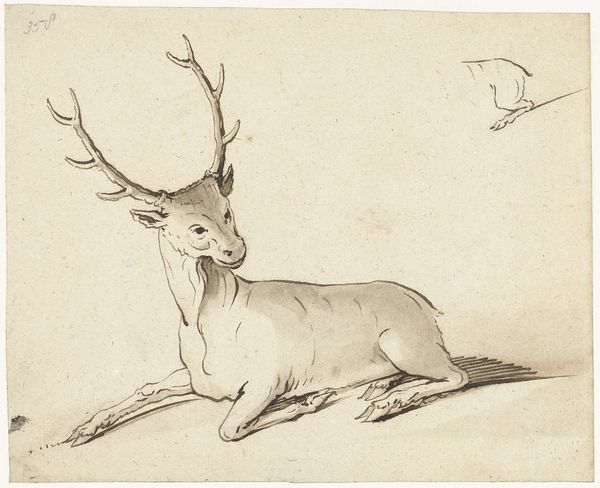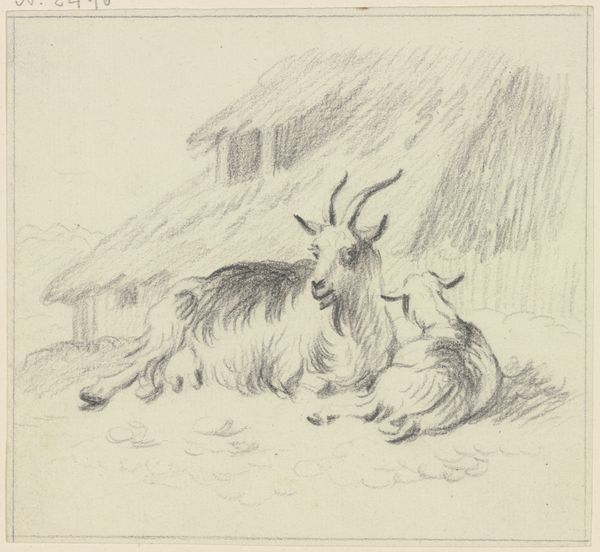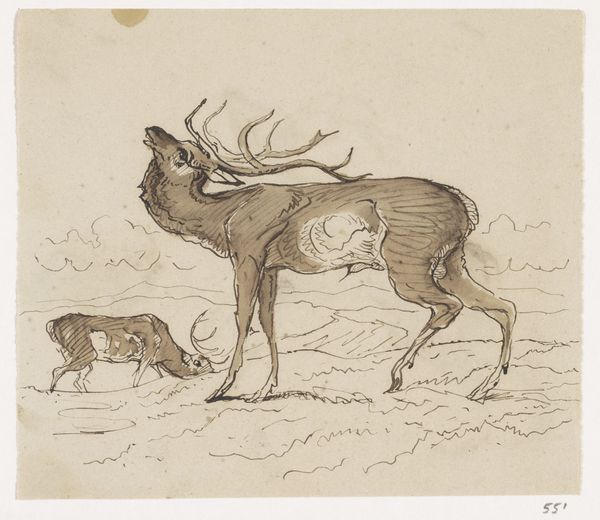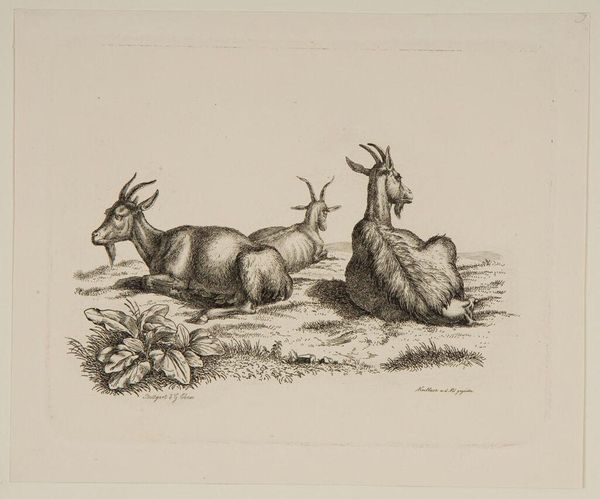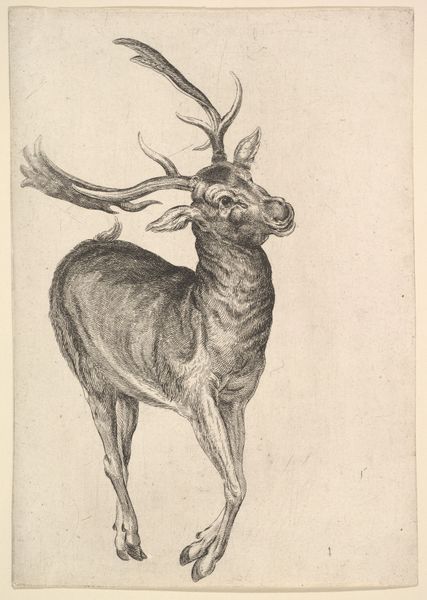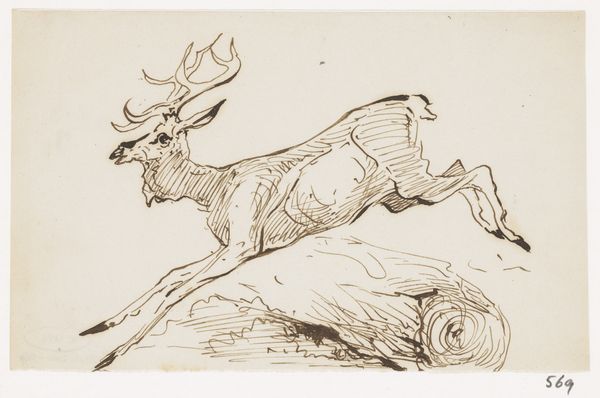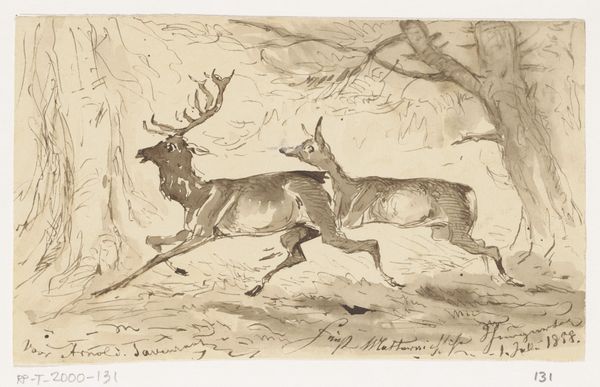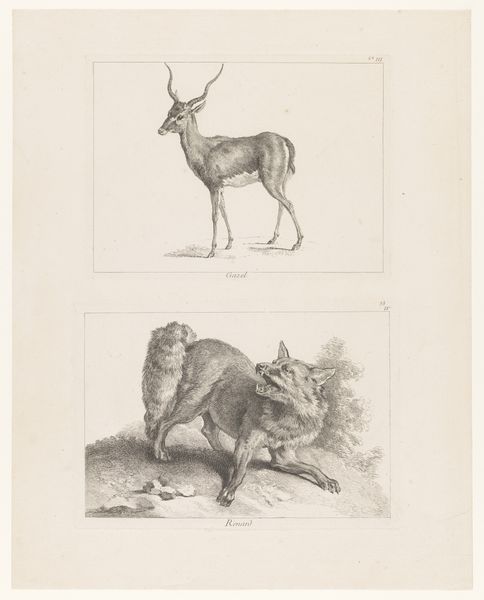
drawing, print, engraving
#
pencil drawn
#
drawing
# print
#
landscape
#
figuration
#
pencil drawing
#
line
#
engraving
#
realism
Dimensions: 129 mm (height) x 162 mm (width) (bladmaal)
Editor: So this is "Liggende hjort" – or "Reclining Deer" – made in 1841 by Georg Emil Libert. It’s a drawing and engraving, pretty understated. There’s something peaceful and melancholic about the deer’s posture…almost like it's posing. How would you interpret this work? Curator: That air of melancholic nobility is a good starting point. Think about the deer itself. Throughout history, across cultures, it’s carried powerful symbolic weight. It is about vulnerability and strength, instinct and awareness. Here, what kind of associations does the deer conjure for you, especially in the context of 1841 Denmark? Editor: Well, seeing as it's a landscape, perhaps it speaks to Denmark's relationship with nature. Maybe it evokes a Romantic appreciation of the wild? I guess the deer could be a stand-in for something... but what? Curator: Precisely. What national characteristics or anxieties could be projected onto this animal? Think of Romanticism's focus on national identity, and how animals were often deployed as emblems of a nation's spirit or character. This image has this slightly haunting effect, achieved through line and subtle shading, that captures a yearning, and a deep introspection about place, time and belonging. The artist leaves clues in the careful rendering, almost as if trying to immortalize this animal – this symbol. Editor: It's amazing how much complexity lies beneath this seemingly simple sketch. The animal as an emblem – I hadn't thought of it that way. Curator: Symbols evolve, and the artist is shaping, reshaping and recording them. Perhaps next time you see an animal in a landscape you will think of this piece. Editor: I definitely will. Thanks for pointing out how symbols influence our reading of this seemingly tranquil animal portrait.
Comments
No comments
Be the first to comment and join the conversation on the ultimate creative platform.
